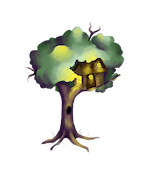Observe the Moon
Your goal in this task is to observe the Moon for an entire 28-day cycle (or longer, if you wish) and display your observations in an interesting way. Rather than just copying someone else's Moon chart or looking up what the moon SHOULD look like each night, actually observe the moon yourself and record your data with photographs, sketches, or any other way you prefer. If you have gaps in your data (for example, it was cloudy or you forgot to go out one night), record that as well. Then decide how to fill in those gaps - will you estimate based upon the surrounding days? Will you observe for an additional 28 days to observe patterns and then merge your data? Will you look up what other people observed on the nights you missed and use their data to fill in your gaps? You are the scientist, so you get to decide!
In order to get started observing the Moon, you will need to look up moonrise, moonset, and the weather for your local area. A good source for that is timeanddate.com.
If you live near the ocean, you may want to add tidal data to your Moon data to observe the effects of the Moon on tides. You can look up tidal charts for your area, and if you live close enough to the coast, you may wish to observe and document the daily tide changes yourself. You could photograph or sketch high and low tides, measure the distance from a fixed point to the water's edge, or any other method of documentation that makes sense to you. Compare your tide data to your Moon data - what patterns emerge? What conclusions can you draw? What new questions come up?
You can find your local tidal data at usharbors.com.

Once you have gathered your data, your final goal is to find a way to display it so that it is meaningful to you and communicates something to others. If you took photographs or drew sketches, you could create a calendar, timeline, or circle to show the changes in the moon and/or tides. You could make a short film or animation. You could make an interactive simulation or game. The only limit is your own imagination. What will you create to honor the Moon?
The next section contains an experiment to help you better understand why the Moon looks different each night.

TreeFort Learning is a not-for-profit organization that provides project-based, self-directed learning that is free for all. If you like our work, please consider making a donation on our website.